Bright Autumn Festival
The Bright Autumn Festival began in 1962 when the town celebrated its centenary. 1 The inaugural festival took place in the week of the 10th — 18th March, 1962, and was marked with the unveiling of a pioneer cairn in Centenary Park to ‘pay tribute to our courageous and far-seeing pioneers’. 2
The festival, which is largely a celebration of the time of year when Bright’s many tree-lined avenues take on their autumn hues, is marked with activities such as photography events, art exhibitions, open gardens, walks, bike rides, craft workshops and the promotion of local food and wine. It is a time when ‘the whole town comes alive with a buzzing sense of activity’.3
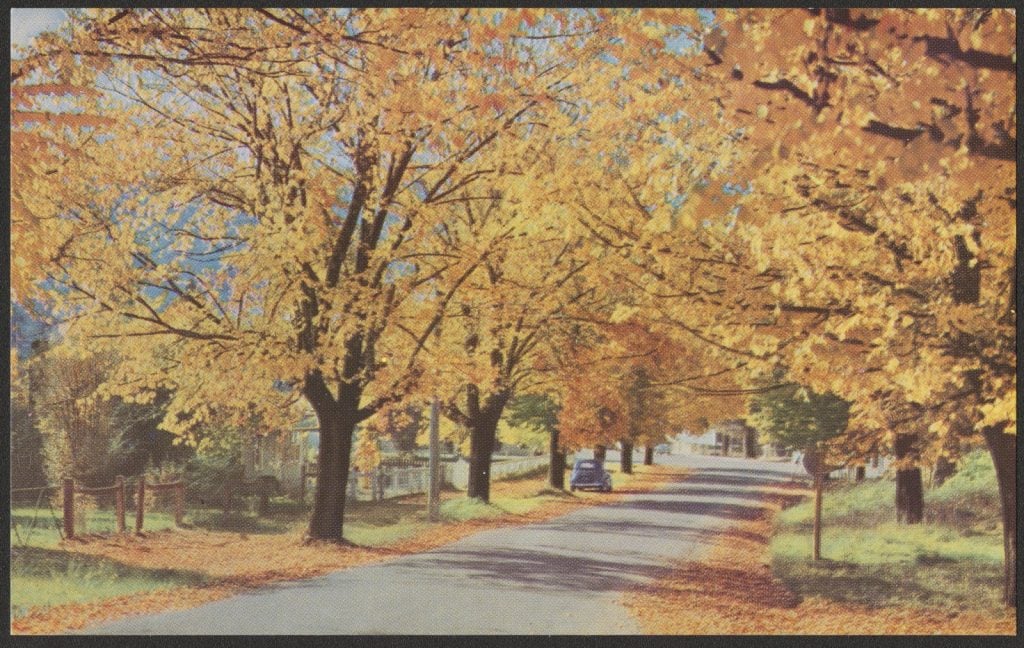
The festival, over the years, has included slide nights, concerts, sporting events, and a gala day which saw the crowning of the winner of the Miss Autumn Festival.4 The Library holds a wonderful collection of photographs of the Autumn Festival of 1970 from the Le Dawn Studios Archive, including those below:


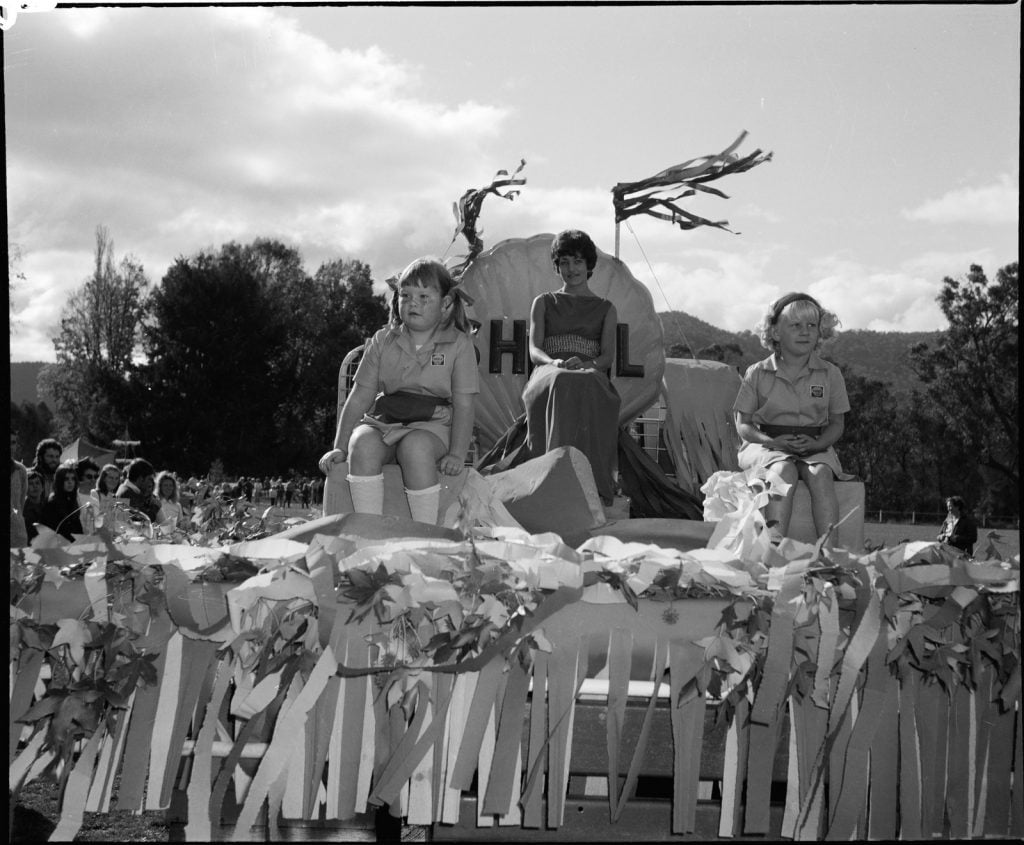

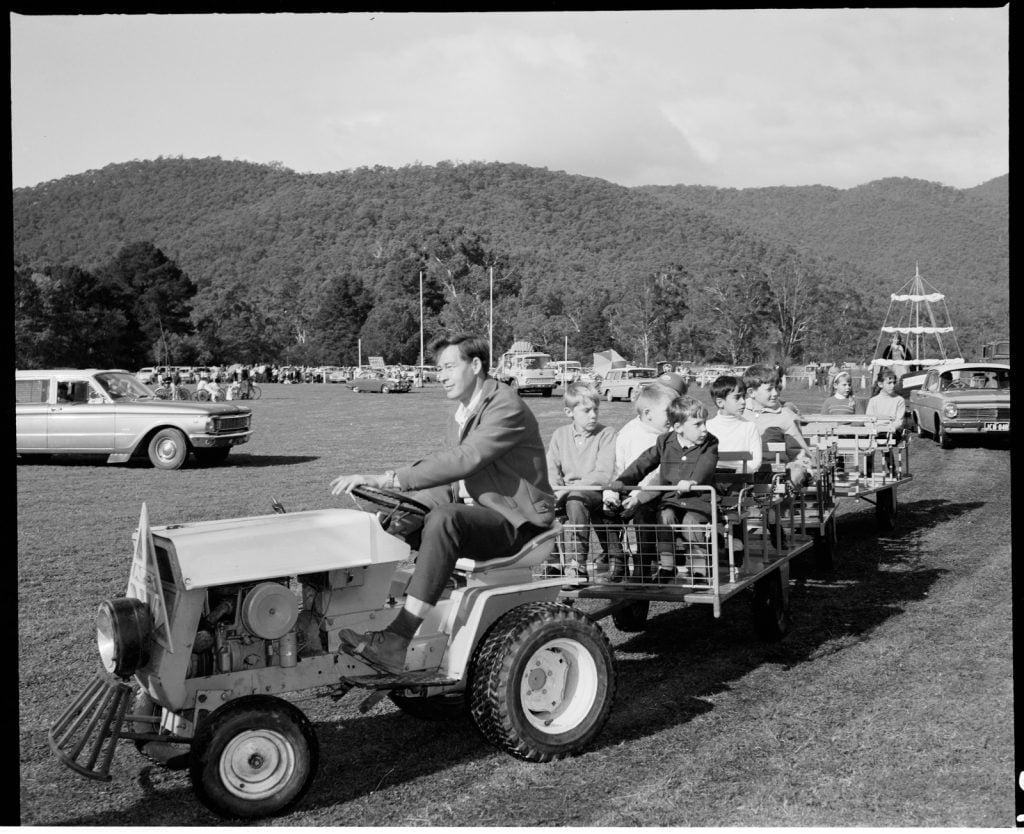
Early years of Bright
In the early 1850s, gold was discovered in the area and alluvial gold mining began taking place along the Ovens River. 5 Over time, simple gold panning methods came to be replaced by quartz reef mining. 6 This more intensive activity led to a massive increase in the local population, 7 bringing an influx of people from other Australian goldfields and international gold seekers from areas including China, America and Europe. 8
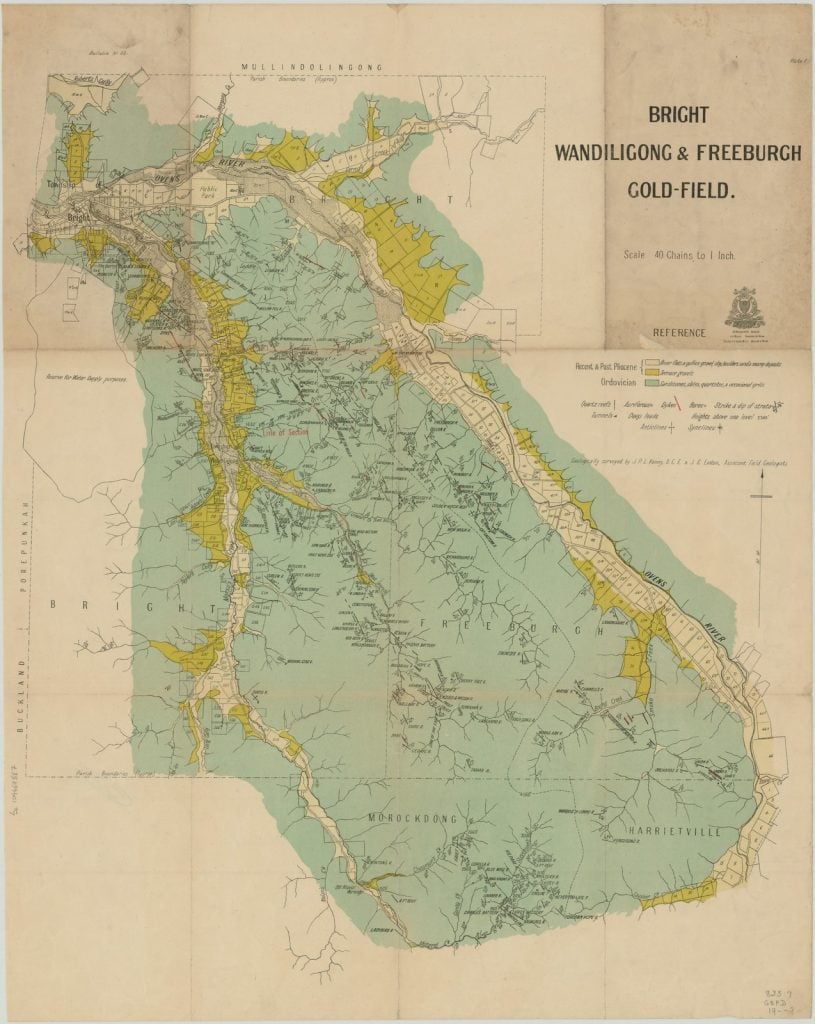
The area was originally known as Morse’s Creek, but in 1862 was named Bright. It is believed to be named after member of Parliament and founder of the ‘free trade movement,’ John Bright (1811-89). 9 10
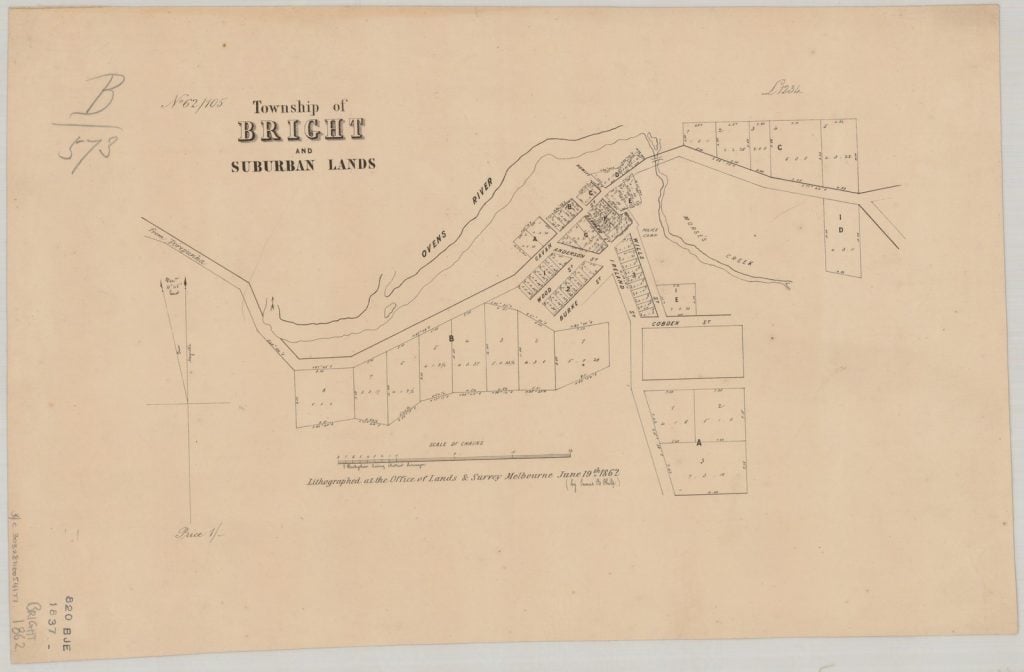
‘Legend has it that in the early days of Bright when the town was first surveyed it was designed to be reminiscent of an English village, complete with a town square.’ — Diann Talbot 11
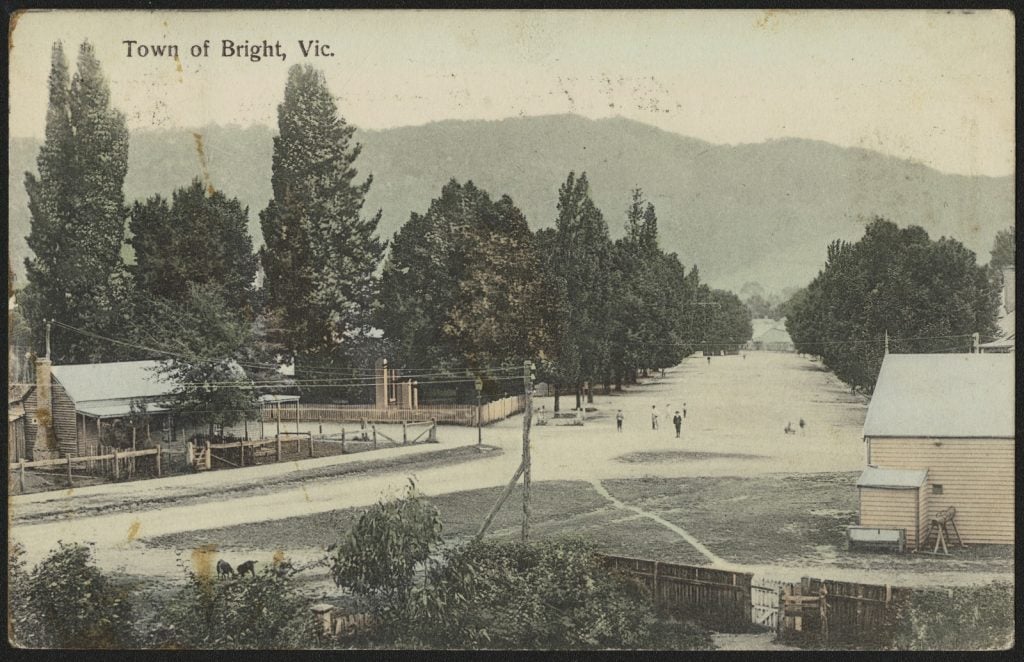
By the 1870s Bright’s body of ore had been significantly reduced and the population began to decline.12 An era of gold dredging began around 1899. 13 This dredging left deep scars across the landscape, and in time, these areas were planted with pine trees and large softwood plantations. The community, together with the Bright Progress Association, also began to plant exotic trees to help improve the landscape. 14
 Ovens river & pine forests, Bright, Vic., [c1920-1954]; H32492/8195
Ovens river & pine forests, Bright, Vic., [c1920-1954]; H32492/8195
After its gold boom, Bright was largely buoyed by the building of its railway and a growing alpine tourism industry. 15 1890 saw the completion of its railway,16the station of which is now home to the Bright Museum.
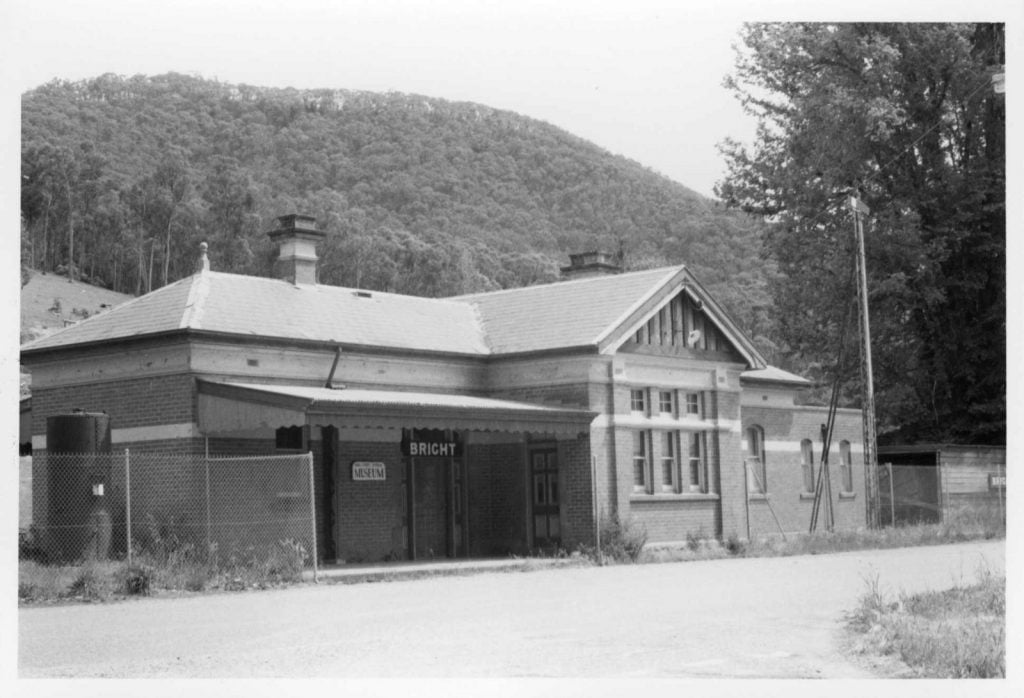
The Bright Alpine Club was formed in 1887. Promoting walking trails and horse tracks to provide access to the most beautiful parts of the area, it was also responsible for the production of guide books and maps featuring the attractions of the district. 17
The town’s memorial clock tower was first unveiled in 1929 during ‘Back-to-Bright’ celebrations.18 The tower was erected in Mafeking Square as a memorial to soldiers of 1914-1918 war. 19
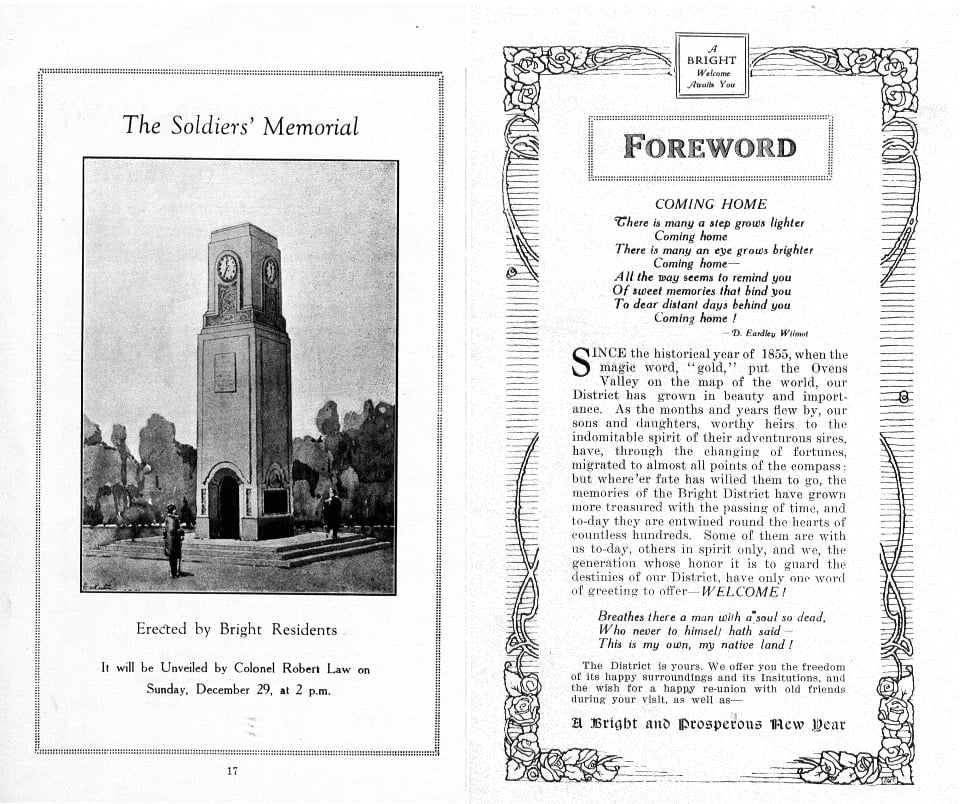
The history of this town is neatly summed up in a beautiful poem by Mollie Hill:
GOLDEN HERITAGE
‘They came for gold a century ago
And mined and washed and dredged the precious ore,
And round their humble homes they tried to grow
The trees they’d known, and loved, in days before.
And, when the hills and streams withheld their prize,
When gold – too hard to win – closed up the mines,
The trees had stretched their branches to the skies
And with them, now, were added stately pines.
The chain-saw’s burr, the whistle at the mills –
Regenerating forests, tall and green
That hide the tailings and the mine-scarred hills –
These are the sounds and vistas of our scene.
Victoria’s highest mountains cradle Bright,
Snow-capped in Winter, glorious to behold,
And Autumn brings another lovely sight –
The turning leaves – our heritage of gold.’ 20
More to explore
The following historical booklets have been digitised and are available through the State Library Victoria catalogue:
Back to Bright district, Xmas 1929 : souvenir booklet and official programme, [1929]
IIlustrated guide to the Australian Alps & Buffalo Ranges / issued by the Bright Alpine Club, [1897]
Illustrated guide to the Bright district/published by the Bright District Progress Association and Alpine Club, [193?]
The region’s historic newspaper Alpine Observer and North-Eastern Herald have been digitised and can be accessed via the Trove website for the years 1916-1918
You may also like
References
- Bright Autumn Festival. (2020). About the Bright Autumn Festival. https://www.brightautumnfestival.org.au/about/
- Centenary Committee. (1962). Centenary of Bright: March 10th-18th, 1962 [pamphlet]
- Bright Tourist Information Centre. (1994). Bright, alright!: Bright, Freeburgh, Harrietville, Porepunkah, Wandiligong holiday guide [pamphlet]
- Bright District Chamber of Commerce. (n.d.). Bright holiday guide: incorporating Porepunkah and Harrietville. Bright and District Chamber of Commerce[pamphlet]
- Centenary Committee. (1962). Centenary of Bright: March 10th-18th, 1962 [pamphlet]
- Treacy, K. (1998). Beyond gold: 150 years of memories 1848-1998, incorporating a history of the Catholic Parish of Bright. Catholic Parish of Bright and Mount Beauty
- Victorian Places. (2015). Bright. https://www.victorianplaces.com.au/bright
- Bright District Chamber of Commerce. (2009). Bright: who what when where: Mt Hotham, Wandiligong, Harrietville, Freeburgh, Porepunkah, Eurobin Smoko, Mt Buffalo [pamphlet]
- Centenary Committee. (1962). Centenary of Bright: March 10th-18th, 1962 [pamphlet]
- Victorian Places. (2015). Bright. https://www.victorianplaces.com.au/bright
- Talbot, D. (2003). Exploring Bright: then and now. D. Talbot, p.3
- Victorian Places. (2015). Bright. https://www.victorianplaces.com.au/bright
- Centenary Committee. (1962). Centenary of Bright: March 10th-18th, 1962 [pamphlet]
- Victorian Places. (2015). Bright. https://www.victorianplaces.com.au/bright
- Victorian Places. (2015). Bright. https://www.victorianplaces.com.au/bright.
- Centenary Committee. (1962). Centenary of Bright: March 10th-18th, 1962
- Bright District Chamber of Commerce. (1978). Bright holiday guide; welcome to Bright, the holiday resort for all seasons [pamphlet]
- Centenary Committee. (1962). Centenary of Bright: March 10th-18th, 1962 [pamphlet]
- Bright District Chamber of Commerce. (1978). Bright holiday guide; welcome to Bright, the holiday resort for all seasons [pamphlet]
- Centenary Committee. (1962). Centenary of Bright: March 10th-18th, 1962 [pamphlet]

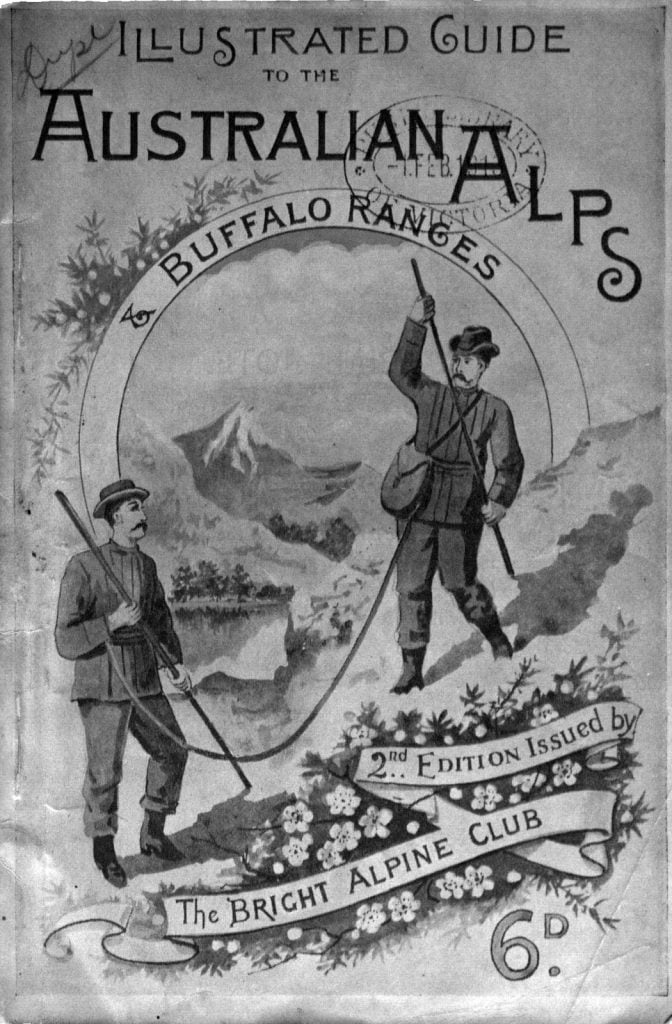

Loved this feature on Bright. Have been there many times but did not know about the history of the place.
My grandmother was born and raised in Wandiligong. After the family moved to Melbourne she met and married my grandfather who was born and raised in the Buckland Valley. They both of them attended the ‘Back to Bright’ celebrations in 1929 and I have some photos that they took on the occasion.
How lovely!